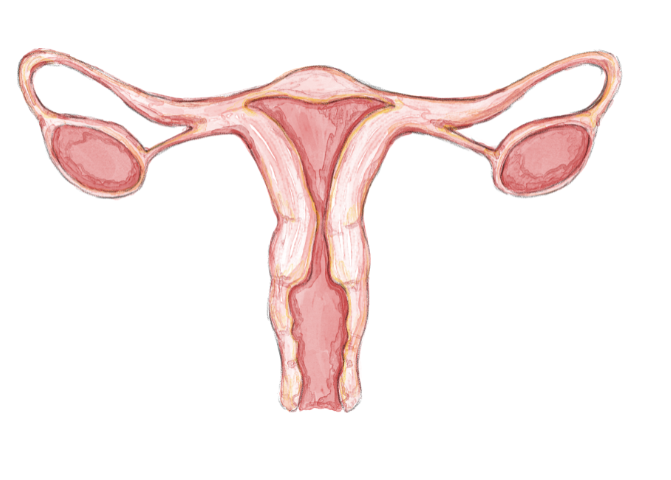15/09/2023
Vaginal Discharge – Everything You Need To Know
What is vaginal discharge?
Vaginal discharge is a common concern for many women but is frequently part of a normal and much needed physiological process that keeps the vulva and vagina moist and helps to prevent infections. It is largely made up of mucus, vaginal cells, sweat, bacteria, products of menstruation and oils. Women who are still menstruating will have varying amounts of discharge throughout their cycle and women who have entered menopause may also still produce some amount of vaginal discharge although it is common for the amount to reduce. Paying attention to the colour, smell and amount of discharge can be a clue to the health of your vagina and a malodorous, colourful or profuse amount of discharge can suggest a problem worthy of discussion a health professional. This article aims to discuss the most common causes of vaginal discharge.
What are the common causes of vaginal discharge?
Non-Infectious causes
Physiological
Vaginal discharge can be and often is completely normal. Physiological discharge does not have an offensive odour or cause discomfort. It is usually clear or creamy in colour but may be slightly yellow for some women. The amount of discharge you have varies with hormonal changes throughout the menstrual cycle and during menopause. It will increase during pregnancy and when a woman is sexually aroused.
Hormonal contraceptives
Hormonal contraceptives tend to increase the amount of cervical mucus due to the hormones they contain. This means that women who are taking the oral contraceptive pill (OCP) may find that they produce consistently more mucus throughout the month. If it is not profuse, or foul smelling or oddly coloured then it is likely to be a side effect of the OCP or physiological. If it is a side effect of the OCP that concerns you it is important to discuss this with your health care provider.
Cervical ectropion and cervical polyps
The cervix is the lower part of the uterus. It has an inner canal (endocervix) which contains mucus secreting cells and an outer part (ectocervix) that projects into the vagina. As with any part of the body, disease can affect the cervix.
A cervical ectropion is simply when cells from the inner canal protrude to the outer part of the cervix as a result of high oestrogen levels. The mucus secreting cells can increase the amount of mucus produced when exposed to the vaginal vault causing non purulent (no pus) discharge. It is commonly seen in people who are pregnant, in adolescents, people taking the OCP and anyone of reproductive age. Because an ectropion is a normal variation of the cervix, treatment is usually not needed unless there are symptoms significantly concerning a patient. Treatment can include stopping any oestrogen containing medications, boric acid pessaries which modifies the acidity of the vagina or ablation of the exposed mucus secreting cells which can cause a significant increase in vaginal discharge until fully healed.
Cervical polyps are finger like projections of the inner cervical cells into the outer cervical and vaginal area. They are usually as a result of chronic inflammation in the area and while most are benign, some can become malignant. They can cause purulent (pus) vaginal discharge alongside bleeding in between periods or after sex and can also become infected. More frequently they are asymptomatic. The usual treatment is removal of polyps by excision.
Foreign bodies
Foreign bodies in the vagina can cause localised inflammation and tissue damage as well as being breeding grounds for infection. The most common vaginal foreign body is a retained tampon or a portion of tampon but may include items like sexual aids and some forms of contraception. Malodorous discharge is a common symptom of a retained foreign body which is as a result of infection around the item. It is crucial to attend your healthcare provider for examination if you believe you have a vaginal foreign body as the resultant infections, particularly with tampons, can be life threatening.
Other causes
Chemical irritants ie douches, latex allergy, malignancies, trauma to the area and radiation treatment are other possible non infectious causes of abnormal vaginal discharge. These are somewhat less common.

Vaginal discharge is frequently part of a normal and much needed physiological process.
Non-sexually transmitted infections
Candida albicans (Thrush)
Candida albicans is a type of fungus and can actually be part of the normal vaginal environment if asymptomatic. Common symptoms of vaginal thrush can include a thick, white and clumping vaginal discharge with associated burning or soreness of the vulva (external vaginal area). Some people may experience discomfort with sexual activity although usually just superficially with external friction. They may also experience painful urination.
An episode of thrush can be spontaneous or it can be as a result of things like antibiotic usage, changes in oestrogen levels (ie pregnancy or post menopausal hormone therapy) and although it is not considered a sexually transmitted infection it can be transferred between untreated partners. Typically your doctor will diagnose you based upon a discussion of your symptoms and a physical examination which may include a vaginal swab to check for candida but also other common causes of discharge.
For most women a pessary treatment inserted into the vagina will help clear up symptoms. Alternatively a single dose of oral treatment can treat vaginal candidiasis. For approximately 10% of women thrush will be a recurrent problem. If this is your experience then discussion around your symptoms with your doctor is essential.
Bacterial vaginosis
Bacterial vaginosis (BV) is generally considered a non sexually transmitted infection. The processes behind the development of BV are unclear but there is evidence that it is, in part, as a result of the disturbance and imbalance of the normal vaginal microbial environment. There is some evidence of transmission between sexual partners although not the sole mechanism of developing BV. It is one of the most common causes of abnormal vaginal discharge in women of reproductive age.
The symptoms of BV are commonly profuse vaginal discharge with an odour described as “fishy”. Some women do not experience symptoms at all. BV can have important consequences for women who are pregnant ie pre-term delivery and spontaneous abortion and increases the risk for all sexually active women of contracting a sexually transmitted disease including but not limited to chlamydia, gonorrhoea or human immunodeficiency virus (HIV).
Treatment is usually a 7 day course of oral treatment or an intra-vaginal treatment for 3-7 days. Unfortunately, recurrence of BV symptoms is common despite recommended treatment and warrants ongoing discussion with your doctor if this is your experience.
Sexually transmitted infections
Chlamydia
Chlamydia is an extremely common sexually transmitted infection (STI) in Australia in sexually active people. Around 80% of the time it is asymptomatic and without regular sexual health screening with your doctor it can be missed. People aged between 15-29 years of age seem to be at particular risk for infection. Having a chlamydial infection increases your risk of contracting another STII and there is often a co-infection with other pathogens such as gonorrhoea and even HIV. Chlamydial infection can have serious implications for female fertility and reproductive health.
If symptoms are present they may include painful urination, discharge, pelvic pain, bleeding or pain with sex and abnormal bleeding between periods. Chlamydia can also cause infection in the eyes, throat and anus. If you have unprotected sex or have multiple partners it is important to get regular sexual health checks and treatment where needed. Your healthcare provider can take cervical swabs and/or urine samples to test for this infection.
Treatment for chlamydia is typically a 7 day course of an oral treatment. Chlamydia is very contagious and if you test positive your doctor will discuss how to approach recent sexual partners to discuss testing and possible treatment for them in a process called contact tracing.
Gonorrhoea
Gonorrhoea is another common STI in Australia and can be present as a co-infection with chlamydia. Similarly to chlamydia, it is frequently asymptomatic and can silently cause harm to your health and fertility. If symptoms in women are present they may include vaginal discharge, painful urination, painful sex, anal discharge and pain with passing bowel motions. In case of eye infection it frequently causes conjunctivitis.
Diagnosis is made by a swab from the inner part of the cervix (endocervix), self swab or urine testing and treatment is usually a single dose of intramuscular or oral treatment. If positive for gonorrhoea your doctor will discuss how to follow up with recent sexual partners so that they can also be tested and treated.
Trichomonas vaginalis
Trichomonas vaginalis is a STI that typically causes a yellow-green and frothy discharge that is often foul smelling and associated with vulvo-vaginal itch. A vaginal examination and swab is needed for diagnosis and the treatment is a single dose of oral treatment. Again contact tracing is important to ensure that all recent partners receive treatment for what may be a silent infection.
Pelvic inflammatory disease
Pelvic inflammatory disease (PID) is an umbrella term used to describe a syndrome of inflammatory disease in the upper genital tract. The upper genital tract includes parts of the uterus, the ovaries, the fallopian tubes and pelvis in general. PID is frequently a complication of untreated STIs such as chlamydia and gonorrhoea. Although the presentation of PID can vary significantly from patient to patient it frequently presents with vaginal discharge alongside pelvic pain, abnormal vaginal bleeding and painful sexual intercourse.
If your GP suspects that you may have PID they will examine you and takes swabs to look for bacteria including those causing sexually transmitted infections and may also request a pelvic ultrasound. Because early detection and treatment of PID are key in preventing poor reproductive health outcomes, your doctor will likely start you on oral treatment. Recent sexual partners would also be tested for STIs and treated.

Talk to a Medmate Online Doctor today.
When should you see your doctor about vaginal discharge and what happens during the appointment?
If your vaginal discharge has a strong and offensive smell, is particularly colourful or profuse or if you are concerned about vaginal discharge then a discussion with a doctor is very appropriate. During the appointment you can expect that your doctor will ask you questions about colour, odour and how much discharge there is. They may also discuss things like your menstrual cycle if you are still menstruating, whether your have pain when you urinate or have sex and they will very likely discuss your sexual history with you. This information is key in helping to determine the cause of vaginal discharge. Online doctors may be able to commence initial treatment while you book in for an examination with your regular GP.
An pelvic examination is an important aspect of investigating vaginal discharge. You will be given privacy and asked to undress from your waist down but you will be given a gown or blanket to cover yourself. Your health care provider will then look an your vulva and vagina externally assessing for signs of disease. They will insert one or two fingers of a gloved hand into your vagina to feel for signs of disease while pressing on areas of your pelvis and abdomen externally. They may also perform a speculum examination to allow for visualisation of internal vaginal structures and also for swabs to be taken from inside the vagina and the opening of the cervix. This is similar to having a pap smear done. While this process can be uncomfortable, it shouldn’t be painful and it is important you communicate any pain or discomfort with your provider.
Regular sexual and reproductive health screening such as pap smears and STI checks are important for everyone. If you are sexually active and have unprotected sex and/or have multiple partners then regular sexual health checks are crucial to your reproductive and overall health.
Remember that although some people feel embarrassed or uncomfortable discussing problems like vaginal discharge, or are worried about undergoing a pelvic examination, doctors are trained to listen for clues in your story and signs in your examination that will help to identify sexual and reproductive health issues. They want to help find problems that can affect your health in the short and long term. They are there to support you to experience a healthy comfortable body and whole body health. If you have vaginal discharge and you are concerned then don’t wait to make the appointment to speak with a Medmate online doctor or regular GP.
References
- Vaginal discharge [Internet]. Healthdirect Australia; 2021 [cited 2023 Sept 14]. Available from: https://www.healthdirect.gov.au/vaginal-discharge.
- Vaginal discharge [Internet]. 2022 [cited 2023 Sept 14]. Available from: https://sti.guidelines.org.au/syndromes/vaginal-discharge/.
- Cervical ectropion – causes – investigations – management [Internet]. 2022 [cited 2023 Sept 14]. Available from: https://teachmeobgyn.com/gynaecology/cervix/cervical-ectropion/
- Kilpatrick C. Cervical polyps – gynaecology and obstetrics [Internet]. MSD Manuals; 2023 [cited 2023 Sept 15]. Available from: https://www.msdmanuals.com/en-au/professional/gynecology-and-obstetrics/miscellaneous-gynecologic-disorders/cervical-polyps
- Cernat G, Leung L. Odorous vaginal discharge. Australian Family Physician . 2011;40(6).
- Candidiasis [Internet]. 2021 [cited 2023 Sept 14]. Available from: https://sti.guidelines.org.au/sexually-transmissible-infections/candidiasis/
- Bacterial vaginosis [Internet]. 2022 [cited 2023 Sept 14]. Available from: https://sti.guidelines.org.au/sexually-transmissible-infections/bacterial-vaginosis/
- Coombe J, Goller J, Vaisey A. New best practice guidance for general practice to reduce chlamydia-associated reproductive complications in women. Australian Journal of General Practice. 2021 Feb;50(1–2).
- Chlamydia [Internet]. 2023 [cited 2023 Sept 14]. Available from: https://sti.guidelines.org.au/sexually-transmissible-infections/chlamydia/
- Gonorrhoea [Internet]. 2023 [cited 2023 Sept 14]. Available from: https://sti.guidelines.org.au/sexually-transmissible-infections/gonorrhoea/
- Department of Health & Human Services. Trichomoniasis [Internet]. Department of Health & Human Services; 2020 [cited 2023 Sept 14]. Available from: https://www.betterhealth.vic.gov.au/health/conditionsandtreatments/trichomoniasis
- Pelvic inflammatory disease treatment guidelines [Internet]. [cited 2023 Sept 14]. Available from: https://www.mshc.org.au/health-professionals/treatment-guidelines/pelvic-inflammatory-disease-treatment-guidelines
Recommended reading
Search for a specific topic or filter by categories to find information on what you need to know on the full Medmate Journal

What to Do When You’re Unwell at Home: A Practical Guide
Feeling unwell at home can be frustrating—especially when you can’t get in to see a doctor or you’re too unwell to leave the house. Whether it’s symptoms of a virus,…
